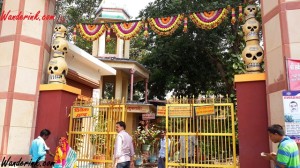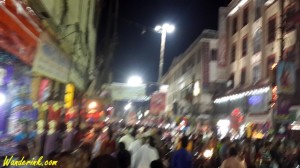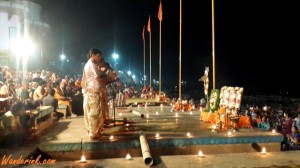Chicken shamans
It is easy to spot a chicken shaman in Kathmandu – they come to you. They tell you about sky burial – a Tibetan form of burial where the body is hacked into pieces – hoping to leave you astounded before they try to persuade you to follow them to a burial site high up in the mountains. If you are still not impressed, they will even perform a trick or two – usually magic or mindreading. The real shamans you seek out. Like I did following a lead from an old Tibet hand into the hilly borders of Nepal. They have piercing eyes but are easy to warm up to – they defend their imposters good-naturedly.
“A guy’s is gotta live,” Gurung said, a smile creasing his leathery good looks, a Philip Marlowe of the East. We were having juice freshly squeezed from the fruits grown in his organic garden overlooking the Annapurna Range. Then he threw in a note of caution:
“Just visit the burial sites with them and be done with it. Being local lads mostly they will be knowledgeable about the locations. But trying to enter into a trance with their help would be a bad idea – coming out will not be easy and may not be complete.”
A few days earlier I was sitting with a woman shaman in Thamel, insisting she cast a spell. I now felt lucky she didn’t, instead she dismissed me as an uninitiated. Maybe I failed the receptiveness test. The jolie laide – the room was overrun by flickering shadows in the candlelit dark – advised and aided me on a different recourse to that flight. My quest for a shaman continued. I reached Gurung.
“It is not the shaman you seek but Lord Shiva himself,” he said. Probably right. In the bigger sense all travellers are seekers of god: some pursue directly, unwaveringly, sitting in one place. Some others are all over, sensing the divine in the chase and devouring all that comes with it.
Then Shiva is an angry god – with every right to be so. His wife Sati – Shakti or Kali in her destructive form and Parvati, the gentle, nurturing one, among hundreds of other avatars – immolated herself to his inconsolable grief making him forsake worldly pleasures and retire to the Kailas in Tibet. His rage can be experienced by anyone trekking up the mountain; but when you reach the highest pass – closest to the god – the gale howls back into an ethereal calm. Almost like Shiva himself has relented, become merciful because you persevered. Or maybe Parvati, the beautiful and the benevolent, who is on the Kailas with him, prevails upon him.
“It’s the Lord Shiva we invoke in our fight against the demons,” Gurung said. The shamans enter into a duel with the demons – responsible for sickness, failed crops and marriages, unhappiness and unemployment – who mill around sky burial sites. They are summoned by the femur (thigh bone) trumpet before slayed with the phurba, the demon dagger, borrowed from Shiva.
The Shiva in Tibet was a private person who kept to himself. When he made his appearance it was mostly as Rudra, his wrathful form. Rudra the howler, the destroyer.
Aghor Ashram
Lord Shiva’s reputation as a ‘smashan vasi’ (one who resides in places of death, generally; ‘smashan’ is cremation ground) continues into Varanasi. This is at the root of many rites performed by the followers of the late Baba Keenaram who founded the Aghor Ashram here. Rumoured to be ritualistic cannibals and necrophiles, members of the sect called Aghoris whom I met would only admit to Baba Keenaram igniting the ‘akhand dhooni’ (the never-dying sacred fire) used for pujas in the ashram with wood collected from nearby cremation ghats. The akhand dhooni is still stoked with embers collected from the ghats every day. The relative innocence of the rituals as reported don’t sound very convincing – there are ‘kapals’ or human skulls at key points of the ashram including the ones flanking the entry gate.
“They are just oversized models as you can see,” said Shivanand, an Aghori. They were indeed mock-ups but kapals nevertheless are the calling cards of Aghoris as anyone who has been to Pushkar Mela will know; definitely those who have attended the after-dark get-togethers removed from Mela grounds. Some Aghoris can also be spotted with chalky white walking sticks which are femur bones. But Shivananad doggedly stuck to the harmless basics.
“Real Aghoris use only ash to cover themselves – just like Lord Shiva himself,” he said. Consumption of alcohol has divine sanction. In a book published by the ashram it is said that Aghoris consume alcohol as Lord Shiva himself must have in order to relate to the mortal way of thinking. Devotees were spotted cuddling bottles of McDowell’s whiskey into the sanctum sanctorum. The Aghoris worship Shiva in his avatar as Mahakala the destroyer and his female manifestation, Shakti. I went to the puja room with the akhand dhooni and sat watching it for a while.
If Shiva was here the presence was a tad unsettling.
Baba Thandai
One of Gandhi’s earliest political speeches was delivered in Varanasi in 1916. He pulled up the city for being an overflowing dump. In his autobiography he moaned that ‘swarming flies and the noise made by the shopkeepers and pilgrims were perfectly insufferable. Where one expected an atmosphere of meditation and communion, it was conspicuous by its absence.’ A century on, it continues to be conspicuous by its absence. While most guidebooks reproduce unerringly Mark Twain’s extolling of the city – Benares (used interchangeably with Varanasi) is ‘older than history, older than tradition, older than legend and looks twice as old as all of them put together’ – none talks about the appalling bit he documented – the city is ‘as insanitary as it is sacred’ and with ‘stagnant puddles of leper-pus.’ The city’s history, myth and tradition continue to be sublime and marvellous but coming in the way are more immediate experiences like gutters and puddles, hustlers, hawkers and piddling cows with their omniscient languor. But at Baba Thandai, they sell tickets to soar above all these.
Thandai left to itself is a milk-based drink with almonds, pistachios and saffron, served cool. But at Baba Thandai, tucked away in a quiet corner of the Dashashwamedh Ghat Road, it is served with a green-balled twist. These globes, the size of puri balls, are bhang as cannabis is called in India. Tip: If properly mixed, the bhang balances the otherwise too-sweet thandai and gives it a tangy edge. My first glass had the unmixed globe at the bottom which I swallowed directly; it tasted like a pungent Ayurvedic concoction. So I had another glass with the bhang stirred proper not shaken. As I walked towards the Dashashwamedh Ghat for the Ganga Aarti that evening, the crowd dissolved into one long whir, the streetlamps deliquesced into a blur. My legs slipped away from beneath me, the ground rushed upward. Somebody did something nice and I had to choose the words ‘thank’ and ‘you’ very deliberately. Even then I watched his face to see if I got it right. I managed to reach the sprawling stone steps where a massive crowd had gathered. I glided down like a schussboomer with wings. Nobody took any particular note of me. Maybe they did. A hopper on my bandana kept me in thrall till somebody pointed me the right way.
The Ganga Aarti is believed to have been first performed in honour of Lord Shiva when he visited Varanasi. Elaborate multi-tiered lamps were lit, smoke from scores of incense sticks filled the air with the fervent chanting of thousands. Marigold and rose petals were showered over the congregation and diyas floated into the Ganges. That night by the ghats and the holy river I found Shiva.
He was everywhere.

















great article on one of the most fascinating hindu gods and its followers. i wonder why my thandai lassi that evening did not have the same effect :-). cheers from goa to delhi, alex
That was the first one mentioned (in the post)…the green globe was found unmixed at the bottom. Make amends next time!
Interesting write up, good work…! I know a bit about the Aghoris from the Pushkar Mela… Very intriguing details you put together.
Thank you, Jatin. To know more about the Aghoris just join them in their tents…usually pitched a little away from the mela grounds 🙂
Thank you Jatin. To know more about the Aghoris, join them in their tents pitched away from mela grounds. Preferably after-dark. Great souls 🙂
Wonderful post… Really liked the title of this post!
That was what it was all about…finding Shiva. Or sieving through the numerous claims 🙂
Reading about those after-effects, I now wish I had given it the ‘green’ signal, too. Oh well, someone has to clap as the heroes go by…
Fly another day… 🙂